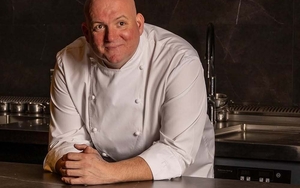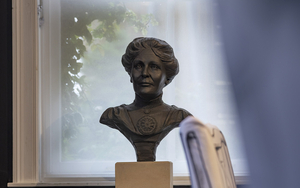WHEN Henry Royce and Charles Rolls met in Manchester’s Midland Hotel in 1904 and laid out a plan to go into business together producing motor cars they set out to make 'The Best Car In The World'.
...almost 600 bhp drags two and a half tonnes of beautiful motor car to 60 mph in 4.7 seconds (a 2017 Porsche Boxster takes 4.8 secs). Amazing!
Few would disagree that by 1907 they had accomplished this objective with the production of the 40/50 which completed 5,000 miles around Scotland (almost twice the annual mileage of most motorists at that time) without requiring any maintenance. In 1911 a 40/50 made a return journey from London to Edinburgh using only top gear for the entire trip.
Over the ensuing decades Rolls-Royce became a by word for excellence. Manufacturers in other industries were delighted to describe their product as 'the Rolls Royce' of their industry.
There is a wonderful, albeit apocryphal, tale of the Roll-Royce owner who contacted the factory after a component in the rear axle of his ten-year-old car failed during a continental tour whilst crossing the Alps. They immediately sent an engineer out with a replacement part who quickly repaired the car and the tour was completed without further incident. Some months later, having not received an invoice for the work he again contacted the firm who told him that he must be mistaken because it was well known that Rolls-Royces don’t break down.
By 1998 the company had been owned by Vickers plc for over 25 years and itself had owned the Bentley marque since 1931. The company made far more cars with the Bentley badge which were viewed as sportier and less staid than their, frequently identical, RR siblings.
When Vickers chose to sell Bentley Motors in 1998 BMW, who were already supplying them with engines, appeared to be in pole position, but their fierce rivals Volkswagen outbid them by quite a margin. To VW’s apparent surprise, although their purchase of Bentley included the RR badge and the right to the iconic radiator grille, the company Rolls-Royce Motors was not part of the deal.
This was followed by some complex behind-the-scenes negotiation during which BMW withdrew their supply of engines, leaving Bentley with a major problem as to how to continue to produce motor cars in the interim period before they could design and build their own Bentley car. Eventually Vickers, VW & BMW came to an agreement. BMW bought Rolls-Royce Motors form Vickers, Bentley granted them the rights to use the badge and grille and the engine supply was resumed.
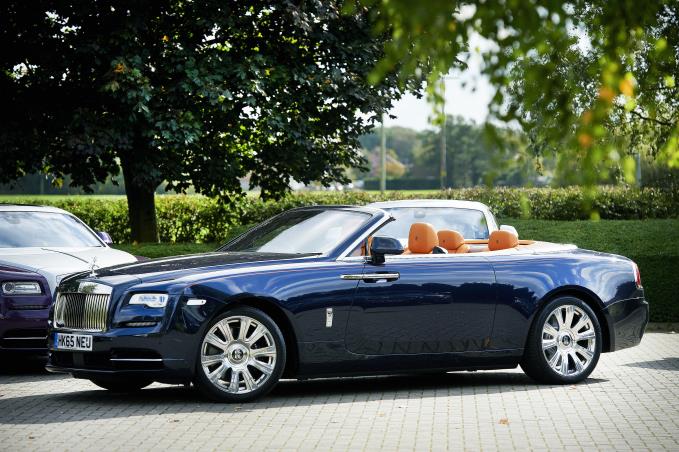 Rolls Royce Dawn
Rolls Royce DawnAt this time several motor manufacturers were muscling in on the potentially lucrative super luxury car market. VW’s approach was to design their own luxury car, the Phaeton, and then use the components and electronics from the range topping six litre twelve cylinder model as a basis for the new Bentley coupe. Mercedes meanwhile were following a similar route by basing their new super luxury brand, the Maybach, on their S class limousine.
BMW however acknowledged that Rolls-Royce had strayed from their roots and started again with a blank sheet of paper. In 2003 they built a high-tech new factory in Goodwood on the Sussex Downs and, with 300 employees, began production of the new Rolls-Royce Phantom.
Whilst VW were taking Bentley on a journey to ‘mass luxury’, targeting production of eight to ten thousand cars per year, BMW believed that true luxury brands don’t have to please everyone and they absolutely refused to compromise.
Their huge Phantom was priced at almost £100,000 more than Bentley’s offering and firmly aimed at the sort of owner who expects to be driven to meetings and events by his chauffeur but also wants his car to be fun when he decides to take the wheel for himself.
Since those early Goodwood days Rolls-Royce have increased their workforce more than five fold to over 1,600 and the range has similarly blossomed.
In addition to the four door Phantom they now have two door coupe and convertible versions, and various body styles for both the Ghost and Wraith. Last year they launched another new model, the convertible Dawn. They have successfully appealed to the well heeled younger driver and now claim that the average age of their buyers is 41. They firmly believe that they understand their customer and are focused on never devaluing the investment that he or she has made.
The North West is an important region for Rolls-Royce and one of their seven UK dealerships is located just outside Manchester in Knutsford. Confidential were privileged to be invited there to road test both a four door Ghost and a Dawn last week.

Entering the Ghost through the rear hinged door one is reminded of cars from a bygone age. Frequently know as ‘suicide doors’ because it is so much easier to eject yourself from a moving car through a front opening door, their true benefit is in offering beskirted ladies a far easier entry and exit whilst allowing those who chose hem lengths around the midriff to retain some semblance of dignity during the process.
Gently pulling the door partly shut it then automatically tightens the latch with a beautiful soft close mechanism.
The key does not need to be handled either during the entry process nor to start the car. As long as it is on your person the doors will automatically unlock; once seated in the armchair more reminiscent of a gentleman’s club than a motor car, you simply have to depress the brake pedal and press the large black button marked 'START'.
It is remarkably easy to drive for such a large car. Just point the Spirit of Ecstasy radiator mascot where you want to go, press the loud pedal and almost 600 bhp drags two and a half tonnes of beautiful motor car to 60 mph in 4.7 seconds (a 2017 Porsche Boxster takes 4.8 secs). Amazing!
The ride is boulevard smooth even on uneven country lanes whilst with active suspension it corners with almost no roll whatsoever.
Altogether this was a great driving experience and, of course, should you wish your chauffeur to take over, the rear has exceptional legroom, a cool box for the champagne, TV tuner with theatre sound together with massage seats equipped with both heating and cooling. If the generous legroom isn’t sufficient an extended wheelbase model can be specified.
Perhaps the most perfect piece of attention to detail is the umbrella storage. Open the front door and the handle of the custom made umbrella can be grasped and extracted from its slot in the top of the front wing. And the pièce de résistance? Ducted warm air to dry it.
The Dawn is described as 'uncompromised drophead luxury'. The one I drove was finished in a deep blue with a waist level coachline matching the unusual orange leather upholstery.
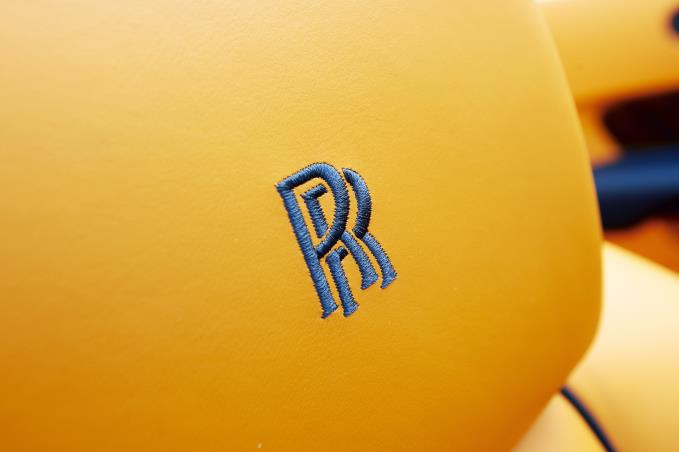
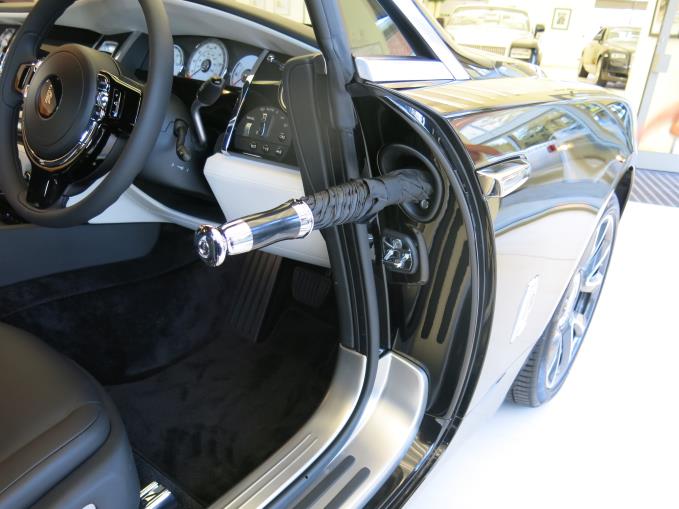 The pièce de résistance? The heated umbrella storage of course
The pièce de résistance? The heated umbrella storage of courseThe additional 300kg resulting from the stiffening of the monocoque to compensate for the removal of the roof results in slightly slower acceleration, although only by 0.2 seconds to 60, so although Lewis Hamilton might notice, I didn’t. The upside is that, other than over the severest bumps, this car feels as rigid as the four door saloon.
As you’d expect it’s loaded with toys. A heads-up display projects both your velocity and the current speed limit into your line of sight apparently just in front of the windscreen. If you allow the car to wander towards the edge of the lane a mild vibration through the steering wheel warns you of the potential impending accident.
With the hood down there is no buffeting and on a beautiful Autumn afternoon this was definitely a great way to travel.
At £319,000 the car I tested is almost twice the price of the ‘entry’ level Bentley GTC, however, it is a full four or even five seater and much more exclusive. Around Hale village or Alderley Edge you’ll see way more than ten Bentley GTCs to every one RR Dawn.
Ultimate owners BMW have done a great job with this brand. They have taken what was a quite tired concept back in 1998 and brought it into the twenty-first century. Judging by the awards they have won, 109 years after Henry Royce and his engineers produced 'The Best Car In The World', they would be right to feel that can still make that claim.
Confidential were guests of Rolls Royce on Manchester Road, Knutsford WA16 0ST











